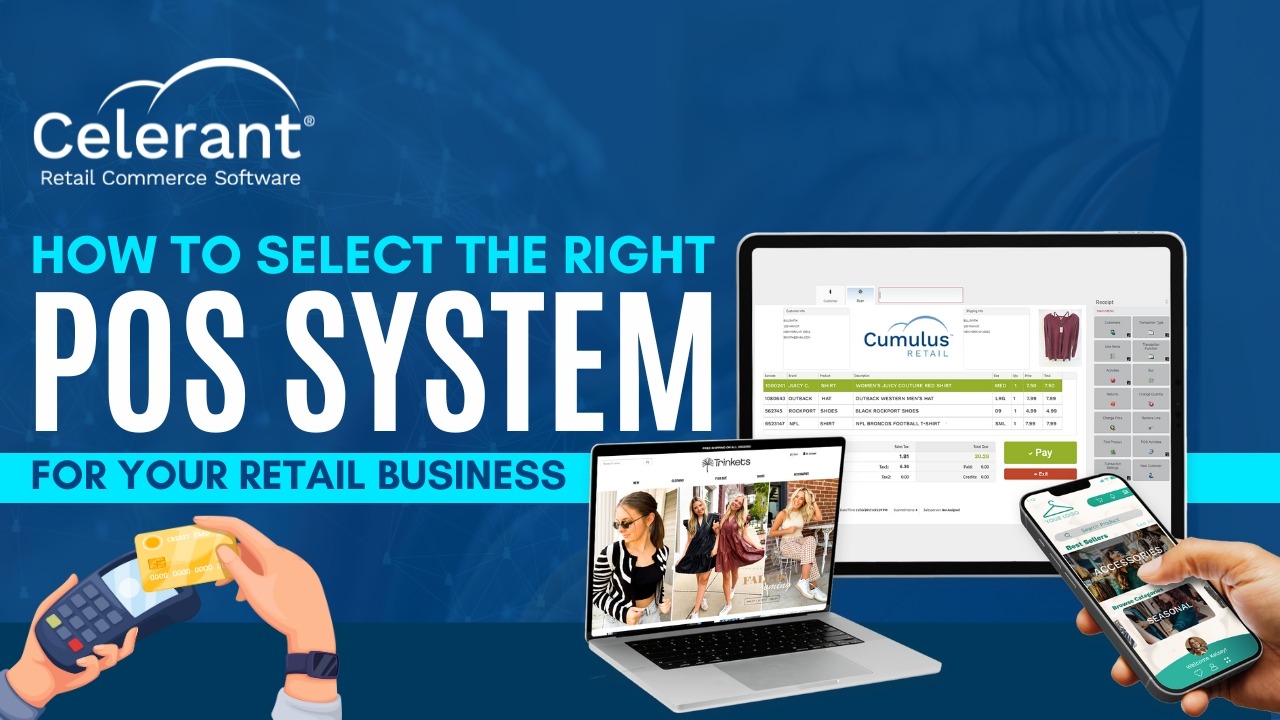Blog
How to Select the Right POS Software for your Retail Business
October 9, 2018 / 6 minute read / By Robert Josefs

Blog

Upgrading your Point of Sale (POS) system can be a game-changer, especially when your old system no longer meets your needs. But before diving into a new technology, it’s crucial to plan for the future.
As a retailer, you must take a look at the projected growth of your business over the next five years. This isn’t just about adding new store locations; it’s also about venturing into the online world or enhancing your eCommerce presence.
Maybe you’re planning for better inventory management, streamlined order fulfillment, or unified data for smarter merchandise decisions.
In today’s retail landscape, POS systems should do more than just handle sales. They should evolve with you, supporting your growth every step of the way.
Choosing a POS provider that aligns with your future plans is key to your business’s lasting success.
Long gone are the days when customer data was limited to in-store purchases only. Today, capturing customer insights spans beyond the Point of Sale (POS) and requires an omnichannel approach. Shoppers don’t differentiate between online and in-store experiences; they expect seamless knowledge and experience across all touchpoints.
To meet this growing demand, maintaining a unified customer profile is crucial. A single login should grant access to loyalty rewards and purchase history, regardless of the channel. Your retail store staff members should have the ability to input in-store customer behavior data and combine it with their online activity to tailor more personalized marketing campaigns.
This holistic approach enables retailers to offer personalized and relevant deals, bridging the gap between online and offline experiences.
In the fast-paced retail landscape, customers no longer tolerate out-of-stock frustrations. The success of the “buy online, pick up in stores” model hinges on real-time visibility into available inventory. Retailers are up against online giants offering perks like free shipping, which makes accurate inventory management vital for survival.
For shoppers, the line between in-store and online blurs. When they can’t find what they need, the thought of ordering online crosses their minds, making real-time, accurate inventory information indispensable. The days of systems that update overnight or even hourly are long gone; now it’s all about real-time integration across every sales channel.
At the heart of a superior retail experience lies visibility – into inventory, consumer records, behaviors, and sales data. The first two are self-explanatory, but monitoring sales data unveils what customers are demanding right now.
Retailers can optimize their inventory by automating orders for top-selling items, ensuring they’re always in stock while preventing slow-moving merchandise from piling up.
Another pain point for the shoppers is traditional in-store POS stations. Customers hate having to wait in long lines or looking for registers. Mobile POS platforms can change everything by equipping every team member with a tablet that functions like a traditional cash register but with the freedom to move anywhere in the store.
This blend of online shopping’s convenience and in-store POS’s immediacy creates a seamless shopping experience. With a hiccup-up free integration and instant access to vital information, shoppers get exactly what they’re looking for, without the hassle.
Mobile POS systems don’t just streamline transactions; they enhance customer interactions, potentially resulting in more referrals and faster service from anywhere. Embrace the convenience of mobile POS and watch your customer satisfaction levels improve.
In today’s digital landscape, staying ahead in the business game means understanding retail technology inside and out. Especially with an endless stream of options, choosing the right point of sale (POS) software is essential for every business owner.
But selecting the right POS software isn’t just about keeping up; it’s about future-proofing your business. It’s the key to increasing your business efficiency, enhancing the customer experience, and gathering valuable data to make smarter decisions.
Gone are the days when a point of sale (POS) system was merely a tool to process payments. POS systems have come a long way from just handling payments.
Modern POS solutions are the backbone of your business, seamlessly connecting everything you do. Think of it as one hub where you manage your inventory, plan your marketing, handle finances, and engage with customers – all in one go.
Now, the big question is: how deeply should you integrate your retail software? Well, that depends on what you want to achieve and what your chosen POS software provider can do. It’s not about doing what’s possible; it’s about finding what fits your business goals just right.
Critical questions to consider while evaluating your POS provider:
Taking a deep look into these factors might require some time, but it’s worth it. Your retail business will not only improve how it works both online and offline, but it will also become much more efficient.
Choosing the right Point of Sale (POS) software is not just a one-time decision; it’s a long-term investment in your business’s future.
And in today’s digital era, where seamless customer experiences and efficient operations are paramount, a well-integrated and user-friendly POS system can make all the difference.
Prioritize systems that scale as your business grows, offering features like real-time inventory management and secure, flexible payment options. Remember, your retail technology should empower, not limit, your growth.
Ready to learn more? 10 Reasons Why You Need an Omnichannel Retail Solution
 Tis the season, so be ready! Read these quick 5 tips about being successful over Black Friday and Cyber… |